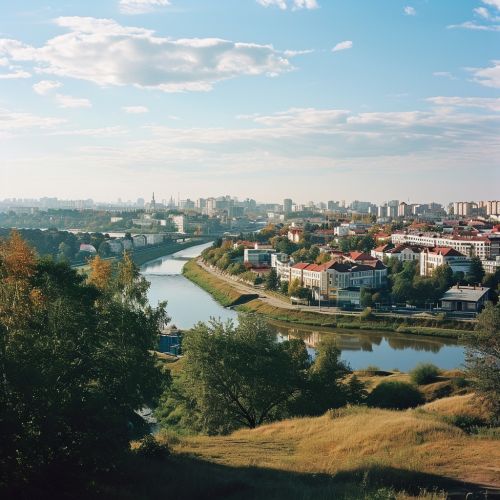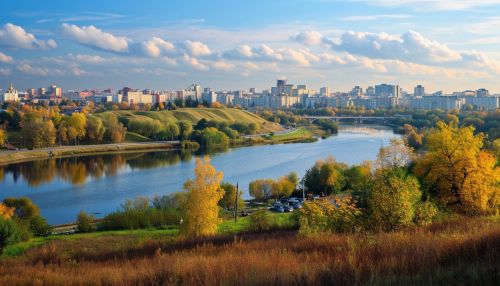Minsk
Geography
Minsk, the capital of Belarus, is situated in the southeastern part of the country, roughly in the center of the Belarusian landmass. The city is located on the southeastern slope of the Minsk Hills, a region of rolling hills running from the southwest (upper reaches of the river Nioman) to the northeast – that is, to the Lukomskaye Lake in northwestern Belarus. The average altitude above sea level is 220 meters (720 ft). The physical geography of Minsk was shaped over the two most recent ice ages. The Svislach River, which flows across the city from the northwest to the southeast, is in the urstromtal, an ancient river valley formed by water flowing from melting ice sheets at the end of the last Ice Age.


History
The earliest historical references to Minsk date to the 11th century (1067), when it was noted as a provincial city within the Principality of Polotsk. The settlement developed on the rivers. In 1242, Minsk became a part of the Grand Duchy of Lithuania. It received town privileges in 1499.
From 1569, it was a capital of the Minsk Voivodship, in the Polish–Lithuanian Commonwealth. It was part of a region annexed by the Russian Empire in 1793, as a consequence of the Second Partition of Poland. From 1919 to 1991, after the Russian Revolution, Minsk was the capital of the Byelorussian Soviet Socialist Republic, in the Soviet Union. In 1991, Belarus regained independence and Minsk continued as the capital.
Economy
Minsk is the economic capital of Belarus. It has developed industrial and services sectors that serve both the domestic market and neighboring countries. The economy of Minsk is dominated by manufacturing industries, which account for approximately 40% of all industrial output. The city is a major production center for heavy machinery, electrical equipment, motor vehicles, chemicals, textiles, and food products. Minsk is also the leading financial center of Belarus, with the headquarters of all major banks and the Belarusian stock exchange located in the city.
Culture
Minsk is the cultural capital of Belarus, hosting numerous cultural events and festivals throughout the year. The city is home to many museums, including the Belarusian National Arts Museum, the Belarusian National History and Culture Museum, and the Minsk City History Museum. The city also boasts a vibrant theater scene, with the National Academic Bolshoi Opera and Ballet Theatre of the Republic of Belarus being one of the most notable. Minsk is also known for its architectural landmarks, such as the Minsk City Hall, the Holy Spirit Cathedral, and the Independence Square.
Education
Minsk is the main educational center of Belarus. It hosts over 500 kindergartens, 258 schools, 28 vocational schools, and 36 higher education institutions, including the Belarusian State University, the Belarusian National Technical University, and the Belarusian State Medical University. The city is also home to the National Academy of Sciences of Belarus, the leading scientific center of the country.
